Iberian Adventure – Page 03
Montserrat and The Black Madonna
Day 4 started with an early breakfast buffet in the hotel complete with a sandwich I made for my lunch. Today we head for an optional (read “extra cost”) tour of Montserrat.
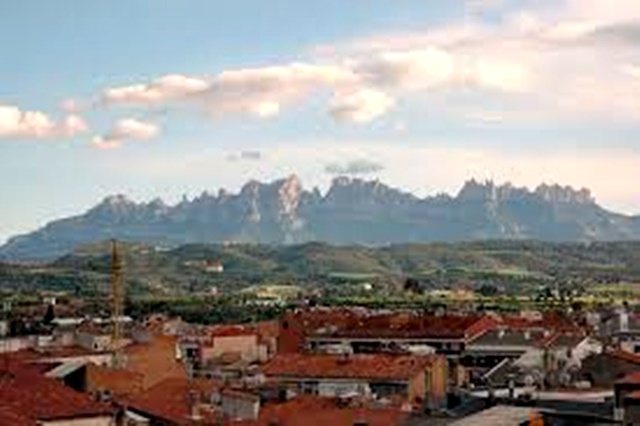

Here is the Montserrat des de Manresa (Serrated Mountain) range. Pretty rugged, ey?

Montserrat is a mountain top monastery. Situated atop an unusual rock mountain, it is very popular among Catalans, and Catholic pilgrims come from far and wide to see the Black Madonna. The basilica is the rounded building on the left.

Here is a view down the mountain
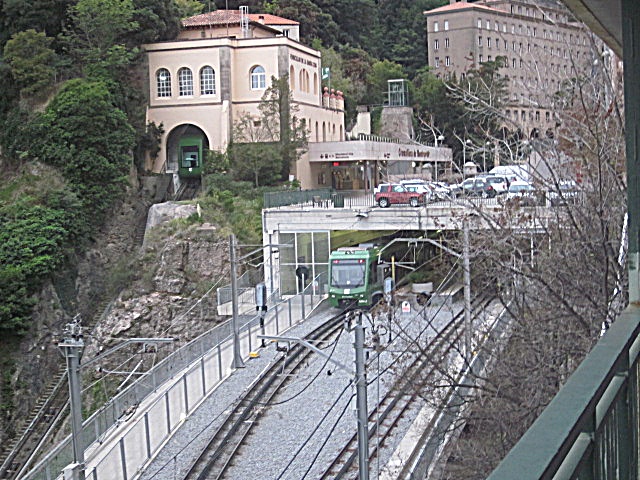
It must have been quite a feat to build in these rugged, high mountains. Not only is there a winding road, but there is also a funicular rail road.
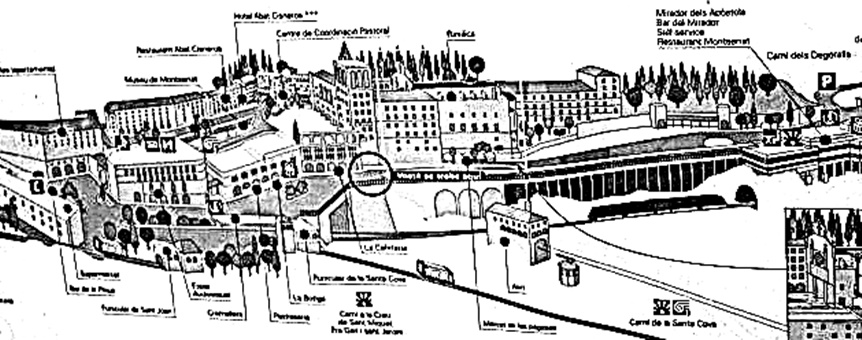
The Virgin of Montserrat is a statue of the Virgin Mary and infant Christ venerated at the Santa Maria de Montserrat monastery. The Virgin of Montserrat (the black virgin), is Catalonia’s favourite saint, and is located in the sanctuary of the Mare de Deu de Montserrat. Note the circle in the center of this drawing. That is where the sanctuary is located.

Here’s the entrance to the Sanctuary.
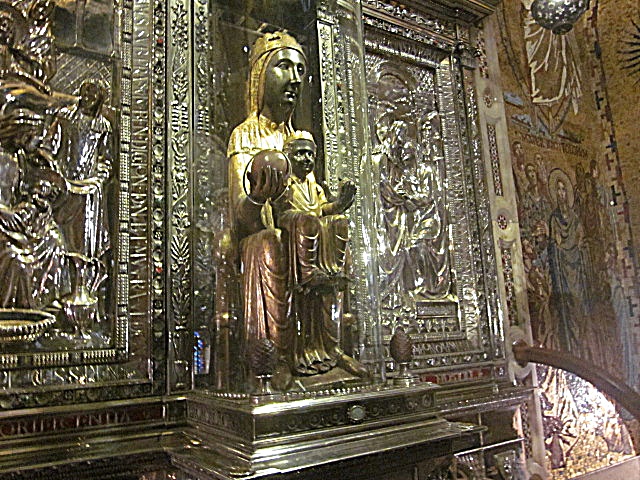
The Lady of Montserrat is one of many black Madonnas of Europe (another is in Czestochowa in Poland), hence it has a familiar Catalan name, la Moreneta (“The little dark-skinned one”). Believed by some to have been carved in Jerusalem in the early days of the church, it is a Romanesque sculpture in wood from the late 12th century. Legend has it that the Benedictine monks could not move the statue to construct their monastery, choosing to instead build around it. The statue’s sanctuary is located at the rear of the chapel, where an altar of gold surrounds the icon, and is now a site of pilgrimages to the Lady of Montserrat

This is a repeated picture from above. I’ve added it again to show the choirboys home. It’s the big building on the right.

L’Escolania choir school is a boys’ choir of sopranos and altos based at the Benedictine abbey Santa Maria de Montserrat. When the repertory requires it, they are accompanied by the Montserrat Chapel Choir, composed of old choirboys and the monks of the Ministry Chapel Choir.
L’Escolania sings every day in the Basilica of Montserrat, often to a great affluence of pilgrims and visitors from all over the world. The midday Salve has become, over the past decades, the most visited daily act of the Sanctuary. The Escolania, Montserrat’s Boys’ Choir, is one of the oldest in Europe, and performs during religious ceremonies and communal prayers in the basilica.
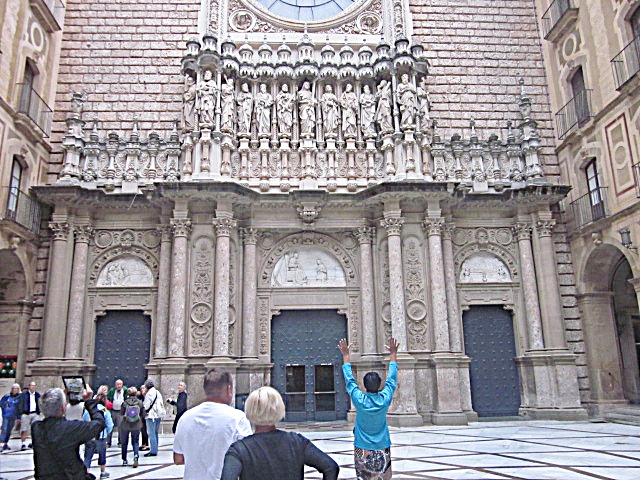
In front of the basilica’s entrance is the “vortex” which is said to be part of the earth’s energy field, and has an entry point here in the mountain. Legend has it that if you stand in the middle of the circle barefoot and raise your arms to the sky, an extraordinary force will pass through you. The priests must be thrilled by this slightly pagan worship going on directly outside. I didn’t try it!
Note the 12 Apostles and Jesus above the main door.
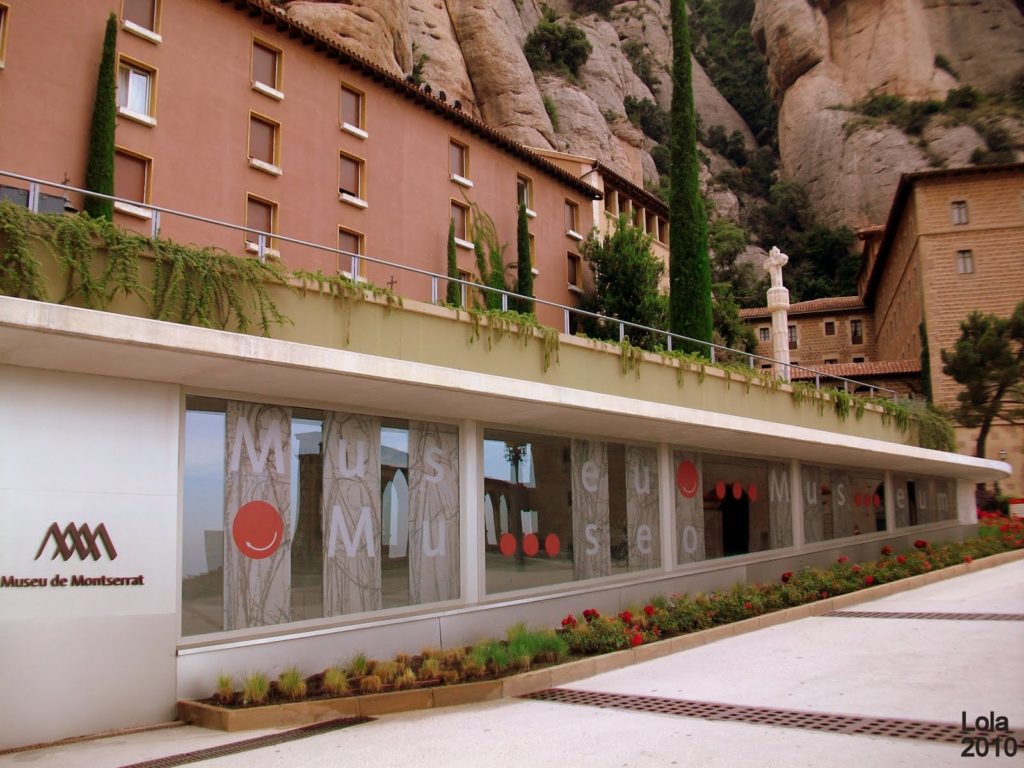
Below the entrance to he basilica is an entrance to an underground museum. It is a large art museum, housing six different permanent collections and playing host to two temporary exhibitions. A lot of visitors to Montserrat are not aware of the treasures that lie within the museum. Take a stroll around and you will find the likes of Picasso, Dali and Caravaggio nestled in amongst less well-known artists.
I photographed a few:

Believe it or not, this is a Picasso “The Old Fisherman”.
 This is a Ramon Casas’ “Au Moulin de la Galette. Madelaine” Note the cigar.
This is a Ramon Casas’ “Au Moulin de la Galette. Madelaine” Note the cigar.

One more: Salvador Dali’s “Three Figures”.
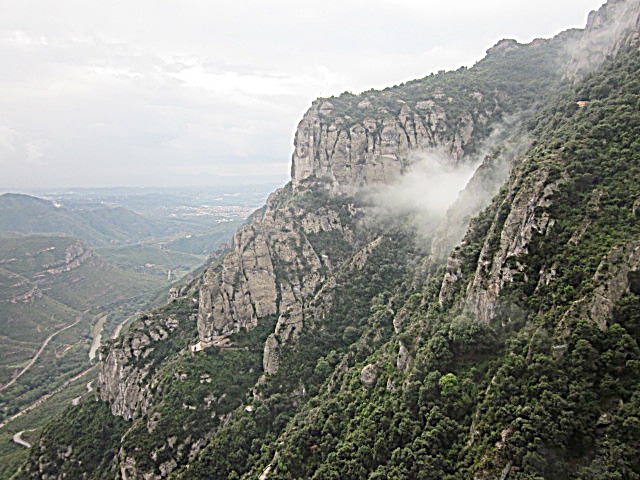
That’s it for Montserrat. We made it down the mountain and headed back to Barcelona in late afternoon. The rest of the day was “hang around” time and a Tapas dinner with Bob and Sandra at “Cavalos”
So ended Day 4.
Go To Page 4














